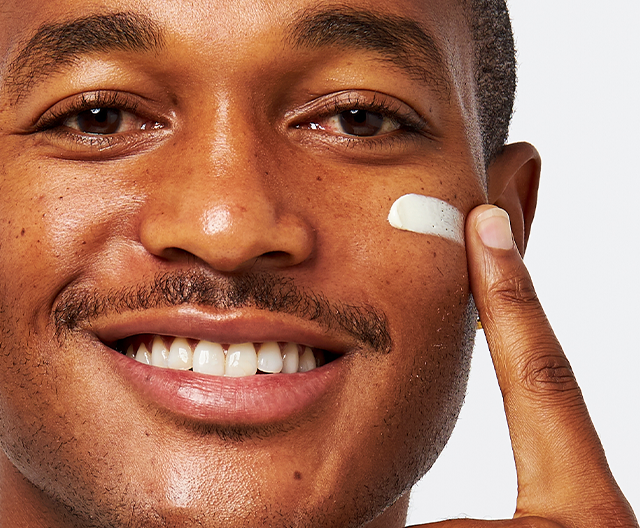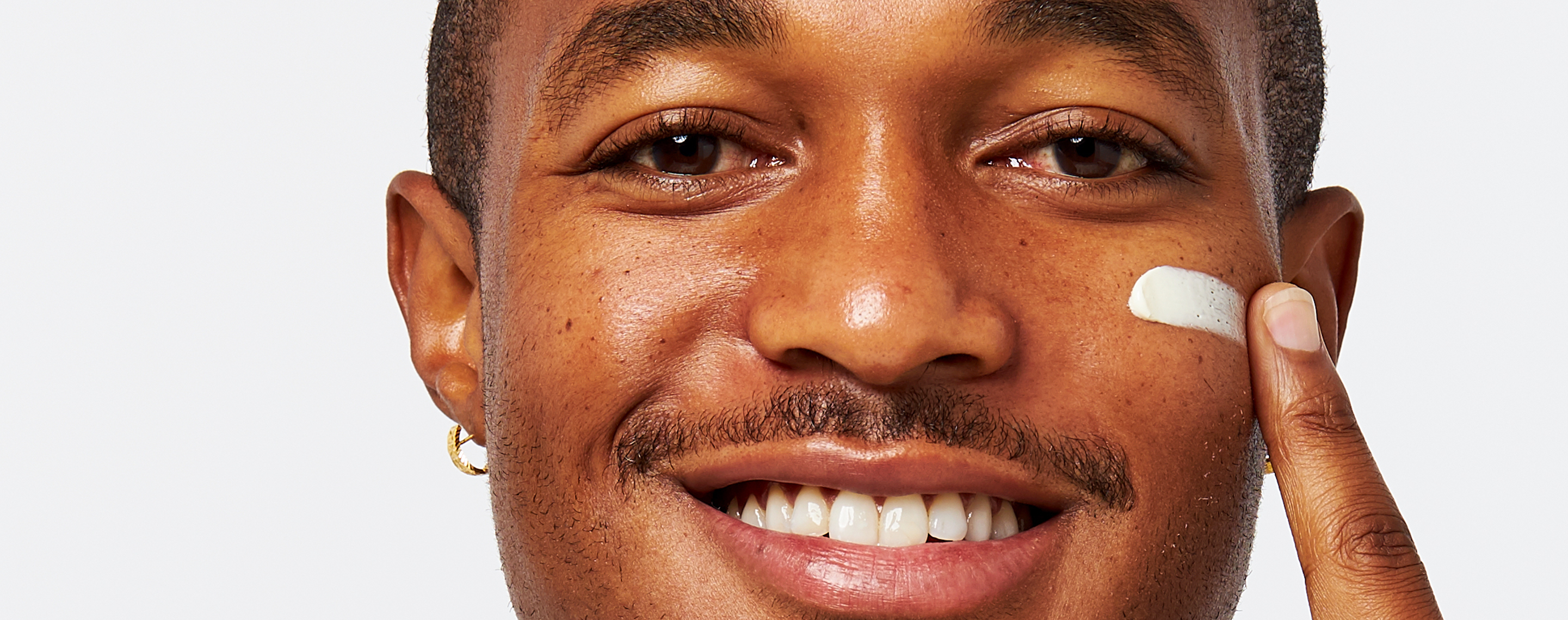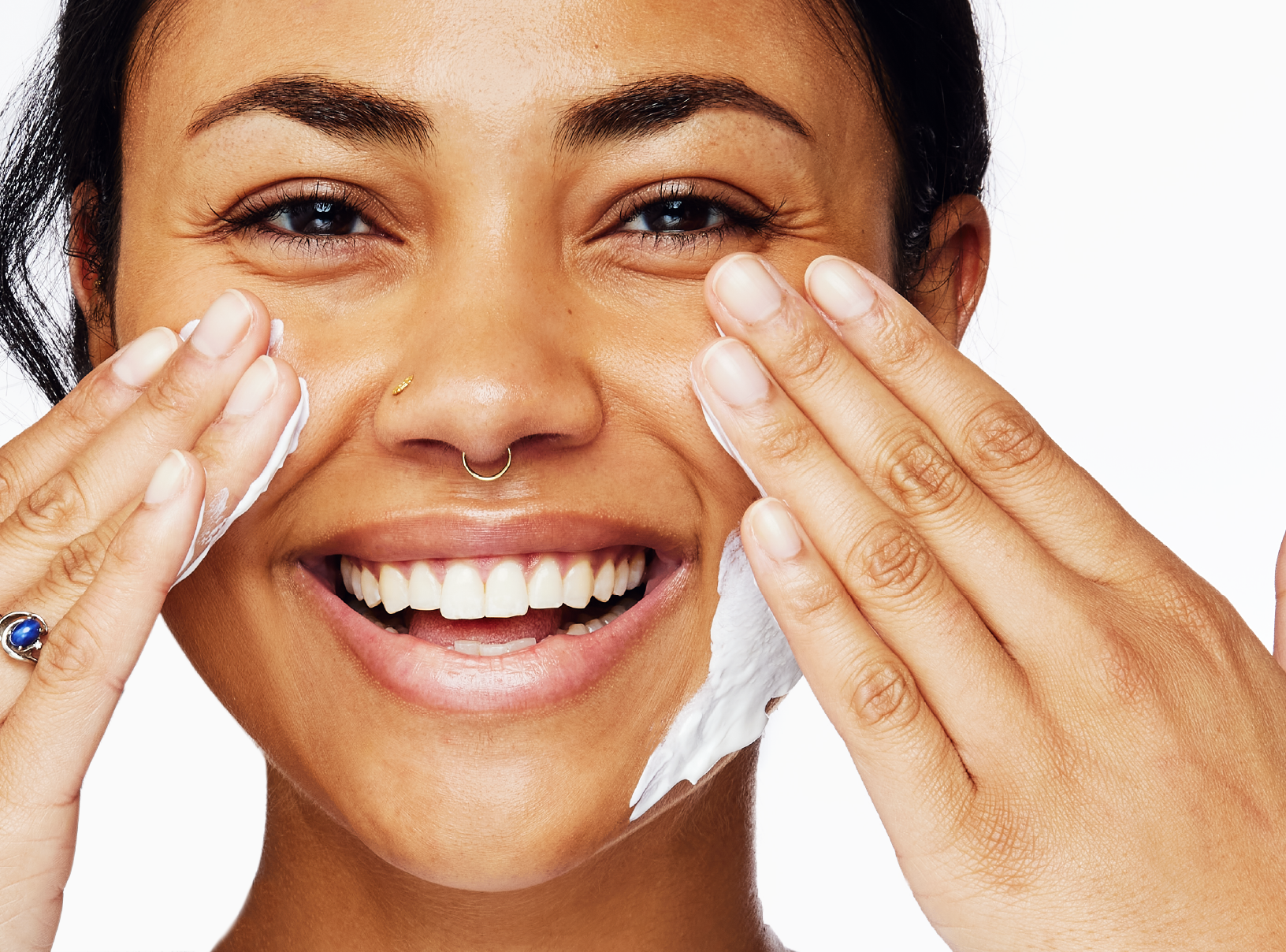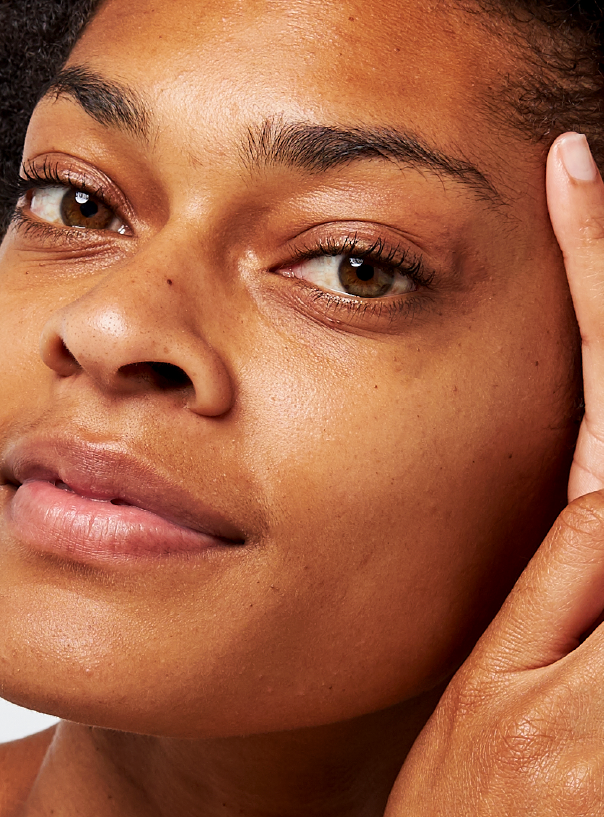Education
Skin Conditions Caused By Sun Damage | Apostrophe


SHARE
Education
Skin Conditions Caused By Sun Damage | Apostrophe
Medically reviewed by Aimee Paik, MD
Written by Apostrophe Team
Last updated 10/6/2022
Signs of Sun Damage & How to Reverse Them
Some signs of sun damage we all know intuitively—sun burns. The pink of your shoulders after a picnic in the park or the lobster-red of your back after basking on the beach under harsh UV rays. But other signs of sun damage may be more subtle and can indicate damage on a cellular level.
To better understand the signs of sun damage, we’ll break down what sun damage is, common skin conditions caused by sun damage, and the best ways to reverse skin damage (as well as how to protect yourself from additional damage in the future).
What Is Sun Damage?
Sunny days can act as the perfect backdrop for a day at the beach, an afternoon baseball game, or an outdoor summer barbecue. But all this sunshine doesn’t come without its risks. In addition to those visible rays of sunshine, the sun also emits ultraviolet light—a shorter wavelength of light that’s undetectable to the human eye. It’s this sneaky sunshine that’s responsible for damaging your skin. Does that mean you’re safe from the sun on cloudy days? Nope. UV rays can filter through the clouds and still cause damage to our skin. In fact, cloudy days are often when some people get the worst sunburns. Even on deceivingly gray and cool days, you can still get a bad sunburn.
The sun’s ultraviolet light is divided into three groups:
UVA Light (Ultraviolet A) – UVA makes up approximately 95% of the ultraviolet light that reaches the earth. UVA rays penetrate deeper into the skin than UVB light and cause signs of aging, such as sun spots and wrinkles, as well as skin cancer.
UVB Light (Ultraviolet B) – UVB rays are responsible for causing sunburn. However, it can also damage your DNA at a cellular level, which can lead to skin cancer. Although our ozone layer absorbs 95% of UVB light, the remaining 5% is enough to cause significant sun damage if sunscreen isn’t worn.
UVC Light (Ultraviolet C) – UVC light is the most dangerous type of ultraviolet light, but it’s entirely filtered out by our atmosphere.
Humans aren't without natural sun protection. Melanin, a pigment found in our skin and hair, affects our sensitivity to ultraviolet light. While people of color have more melanin and, therefore, more natural protection than those with more fair complexions, don’t believe the sunscreen myths saying only people with certain skin tones need to wear sunscreen. All individuals need to wear sunscreen to protect themselves from sun damage effectively. If you’re wondering, “What SPF should I use?,” a few dermatologists recommend a minimum of SPF 15, but most recommend at least SPF 30 for more comprehensive coverage.
How Do Sunscreens Prevent Sun Damage?
Despite how closely you follow sun safety tips or how many times you may have used sunscreen in your life, you may not understand exactly how it works to protect your skin.
So let’s take a crash course.
Types of Sunscreen
Not all sunscreens are created equally. In fact, by taking a look at the ingredients, we can separate sunscreens into three different types:
1. Mineral Sunscreen – Physical sunscreens, also known as mineral sunscreens, utilize inorganic filters that protect your skin from the sun by reflecting 5-10% of UV rays and absorbing and converting the rest into heat. The compounds most commonly used in physical sunscreens are titanium dioxide and zinc oxide.
2. Chemical Sunscreen – Chemical sunscreens, sometimes referred to as organic sunscreens, are produced with organic filters, such as adimate O, octinoxate, octisalate, octocrylene, and ensulizole. These compounds protect your skin from the sun by absorbing ultraviolet radiation and converting its energy into a less damaging wavelength.
3. Hybrid Sunscreen – Hybrid sunscreens incorporate both inorganic and organic filters to create lightweight, blendable formulas that prevent sun damaged skin.
Types of Protection
Sunscreens are also classified based on whether they offer protection against UVA light, UVB light, or both. If you want the most comprehensive protection for your skin, look for broad-spectrum sunscreens, which protect against the damaging effects of both UVA and UVB light.
If you choose a broad-spectrum chemical sunscreen, the following ingredients can provide even greater protection from UVA rays:
Avobenzone
Meradimate
Oxybenzone
Tetraphthalydine dicamphor sulfonic acid
Types of SPF
SPF, which stands for sun protection factor, is the measure of how well a sunscreen will protect your skin from UVB light. However, because the FDA requires broad-spectrum sunscreens to have proportional UVA and UVB protection, you can use your broad-spectrum sunscreen’s SPF number to determine the level of protection against both UVA and UVB light.
Technically, SPF measures the rate of UVB absorption. Based on the SPF formula:
SPF 15 – 93.3 percent UVB absorption
SPF 30 – 96.7 percent UVB absorption
SPF 45 – 97.8 percent UVB absorption
SPF 50 – 98 percent UVB absorption
Skin Conditions Caused by Sun Damage and How to Reverse Them
The sun’s rays are powerful, and overexposure to UVA and UVB can cause a wide range of skin conditions. To better understand the impact overexposure can have on your skin, we’ll explore the five most common skin conditions caused by sun damage:
Sunburns
Freckles
Photoaging
Actinic keratoses
Skin cancers
Sunburns
We’ve all been there. An hour too long out in the sun, and suddenly your skin seems to glow red. In fact, the most common symptom of sunburn is erythema—redness that feels warm to the touch. However, more severe sunburns can cause additional symptoms, including:
Blisters
Nausea
Fever
Chills
Although sunburns are common, it doesn’t mean they aren’t serious. Sunburns are directly correlated with an elevated risk of skin cancer.
This risk increases with two primary factors:
Duration of exposure – The amount of time spent in the sun
Intensity of exposure – The level of UV radiation
Essentially, the more time you spend in the sun, and the higher the UV level, the worse your sunburn will be, and the greater your likelihood of developing skin cancer.
Medications that increase photosensitivity can also elevate your risk of skin cancer due to sunburn. In particular, acne medications, such as doxycycline antibiotics and retinoids, can increase sun sensitivity. To make sure you get full protection against UV exposure and don't upset your acne-prone skin, try searching for the best sunscreen for clogged pores.
The best way to prevent sunburns is by wearing sunscreen and protective clothing, but if you’re already dealing with a painful sunburn, these five treatments can provide relief:
1. Take non-steroidal anti-inflammatory medications to decrease pain.
2. Drink more water to avoid dehydration.
3. Apply topical creams, such as aloe vera or hydrocortisone cream.
4. Soothe your skin with a colloidal oatmeal bath.
5. Visit the doctor if your sunburn is especially severe.
Freckles
Freckles may be cute, but they’re also a sign of sun damaged skin. People with blonde or red hair and fair complexions are more likely to develop freckles because of uneven melanin distribution throughout their skin. Fortunately, freckles aren’t dangerous or painful. Rather, they’re a sign that your skin is more sensitive and needs a higher SPF sunscreen reapplied more frequently.
Many people love the way their freckles look, but if you do wish to lighten your freckles, there are several treatment options you can explore, including:
Medical treatments – Medical treatments to diminish the appearance of freckles include dermabrasion, electrodesiccation, chemical peeling, and laser treatments.
Spot treatments – Spot treatments to lighten freckles include Trichloroacetic Acid (TCA) and phenol.
Topical treatments – Topical treatments, such as tretinoin and hydroquinone, can also be used to reduce the appearance of freckles.
Photoaging
Photoaging refers to premature aging of the skin caused by overexposure to damaging UV light. This skin condition will often take the form of:
Fine and coarse wrinkles
Irregular pigmentation
Lentigines (large, freckle-like spots)
Yellowish complexion
Rough, leathery skin texture
To reduce these premature signs of skin aging, consult with a dermatologist about treatment options, such as:
Retinoids
Lightening/brightening agents
Chemical peels
Laser treatments
Actinic Keratoses
Actinic keratoses refer to precancerous growths that are typically pink or red in appearance but can also be light gray or brown. These growths can look like irregular scaly patches and feel hard, rough, or gritty to the touch.
There are two primary types of treatments used to remove actinic keratoses:
Lesion-targeted treatments – Lesion-targeted treatments include cryotherapy (liquid nitrogen), spray therapy, electrodesiccation, and curettage.
Field-directed treatments – Field-directed treatments include 5-fluorouracil, imiquimod, diclofenac, ingenol, photodynamic therapy, chemical peels, dermabrasion, and lasers.
Skin Cancers
The most serious sign of skin damage from the sun is skin cancer—a medical condition that affects over 3.3 million people every year in the U.S. alone.
There are three main types of skin cancer:
Squamous cell carcinoma
Basal cell carcinoma
Malignant melanoma
The majority of skin cancer cases involve squamous cell carcinomas and basal cell carcinomas, which generally don’t spread to other areas of the body if detected and treated early. While malignant melanomas are the least common type of skin cancer, they’re also the most aggressive.
Reducing overexposure to damaging UV light by regularly applying sunscreen and limiting your time in the sun can significantly impact this dangerous type of sun damage. In fact, those most commonly diagnosed with skin cancer include:
People with extensive past sun exposure – Those who spent a significant amount of time in the sun as children or teenagers are more likely to develop skin cancer.
People with consistent sun exposure – Farmers, athletes, and other individuals who spend the majority of their days out in the sun also have a higher risk of developing skin cancer.
To treat skin cancer, doctors will perform surgery to remove the cancerous growth. For more invasive skin cancers, doctors may have to remove a larger area of skin which they can then replace with either a skin graft or a skin flap.
Thankfully, we can all protect our skin now and in the future with sunscreen.
Shield Your Skin with Apostrophe
Signs of sun damage can range from harmless freckles to deadly cancers. Regardless, wearing broad-spectrum sunscreen every day can prevent sun damage by protecting your skin and ensuring its health.
At Apostrophe, we understand the importance of skin health. That's why we offer not only effective, prescription-strength acne treatments but also a great sunscreen to keep your skin protected alongside your custom acne treatment and for years to come. To learn more about the best skin care products for your unique skin and needs, reach out to us today. You'll receive a personalize skin care plan developed by a board-certified dermatologist to battle breakouts, reverse sun damage, and shield you from harmful UV rays.
For protection and prevention, choose Apostrophe.
Sources:
NASA. Ultraviolet Waves. https://science.nasa.gov/ems/10_ultravioletwaves
National Center for Biotechnology Information. Light, Including Ultraviolet. https://www.ncbi.nlm.nih.gov/pmc/articles/PMC2835849/
National Center for Biotechnology Information. Comprehensive Review of Ultraviolet Radiation and the Current Status on Sunscreens. https://www.ncbi.nlm.nih.gov/pmc/articles/PMC3460660/
Merk Manual. Overview of Sunlight and Skin Damage. https://www.merckmanuals.com/home/skin-disorders/sunlight-and-skin-damage/overview-of-sunlight-and-skin-damage
Skin of Color Society. Sun Protection for Skin of Color. https://skinofcolorsociety.org/dermatology-education/sun-protection-for-skin-of-color/
National Center for Biotechnology Information. Comparison of UVA Protection Factor Measurement Protocols. https://www.ncbi.nlm.nih.gov/pmc/articles/PMC7244352/
Skin Cancer Foundation. Breaking Down Broad-Spectrum Protection: Why Your Sunscreen Needs to Have it. https://www.skincancer.org/blog/broad-spectrum-protection-sunscreen/
National Center for Biotechnology Information. Sunburn. https://www.ncbi.nlm.nih.gov/books/NBK534837/
National Center for Biotechnology Information. Treatment of Freckles Using a Fractional Nonablative 2940nm Erb:YAG Laser in a Series of Asian Patients. https://www.ncbi.nlm.nih.gov/pmc/articles/PMC5605211/
National Center for Biotechnology Information. A Split-face Comparative Study of 70% Trichloroacetic Acid and 80% Phenol Spot Peel in the Treatment of Freckles. https://www.ncbi.nlm.nih.gov/pmc/articles/PMC3560166/
National Library of Medicine. Topical tretinoin: its use in daily practice to reverse photoageing. https://pubmed.ncbi.nlm.nih.gov/2186791/
National Center for Biotechnology Information. Hydroquinone. https://www.ncbi.nlm.nih.gov/books/NBK539693/
National Center for Biotechnology Information. Fighting against Skin Aging. https://www.ncbi.nlm.nih.gov/pmc/articles/PMC6047276/
National Center for Biotechnology Information. Optimal treatment of actinic keratoses. https://www.ncbi.nlm.nih.gov/pmc/articles/PMC3549675/
Merk Manual. Overview of Skin Cancer. https://www.merckmanuals.com/home/skin-disorders/skin-cancers/overview-of-skin-cancer#v26313258
Like what you just read? Sign up for our email list to get the scoop on skincare science delivered straight to your inbox.

Education
What is milia?
What is milia? Today, we’re jumping into one type of bump that you may have heard about most commonly in infants — milia.
Read More
Education
Best moisturizer for acne-prone skin
If you have combination acne-prone skin, figuring out which moisturizer is best for your skin might be tough. In this guide, we break down the best moisturizer for combination, acne-prone skin.
Read More
Education
How to build a face care routine
As you get into skincare, it might seem overwhelming, especially trying to figure out the order you're supposed to apply products in. Below, we detail how to build a face care routine for your skin!
Read More
